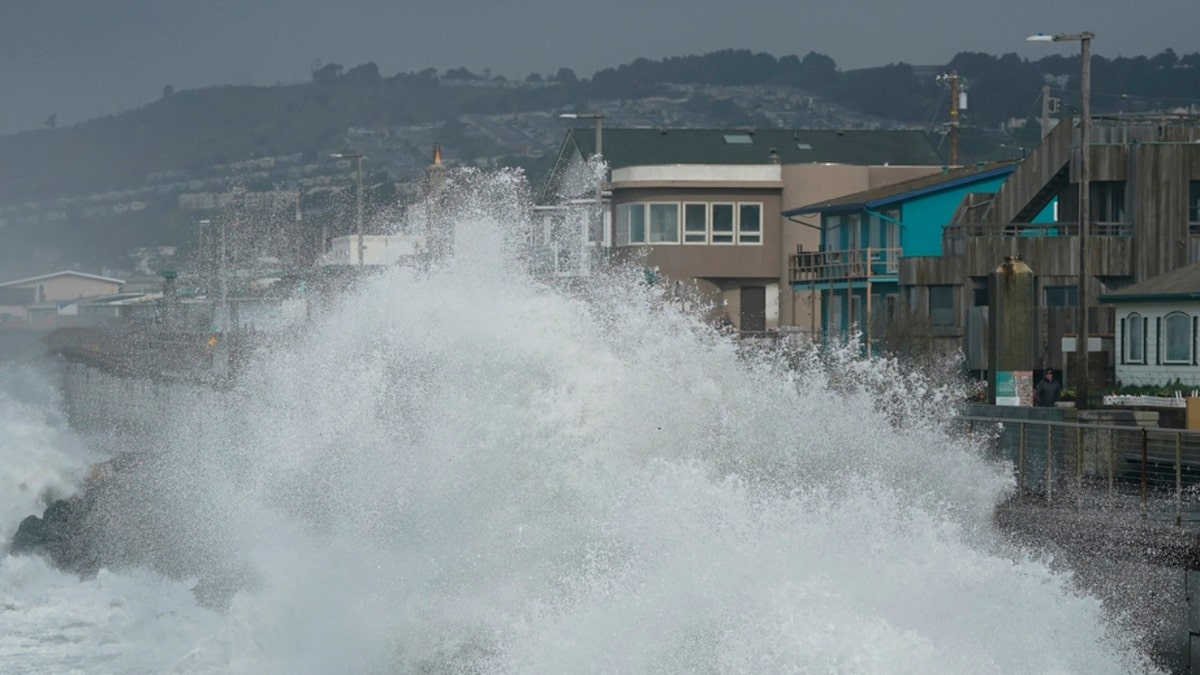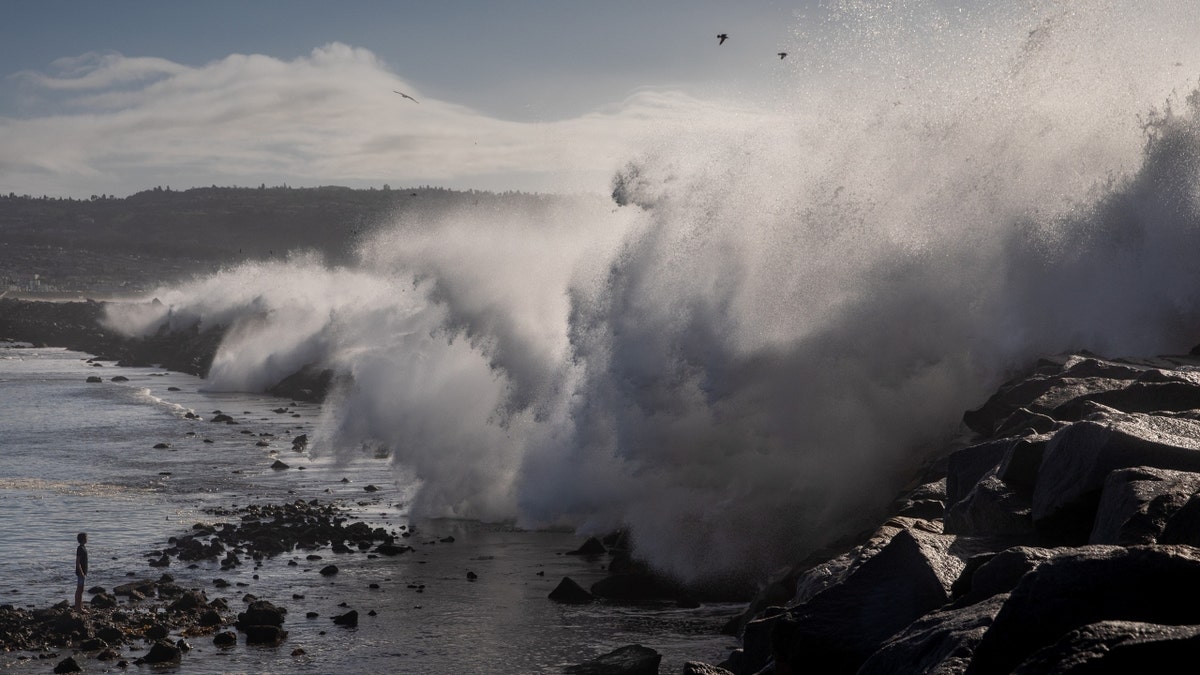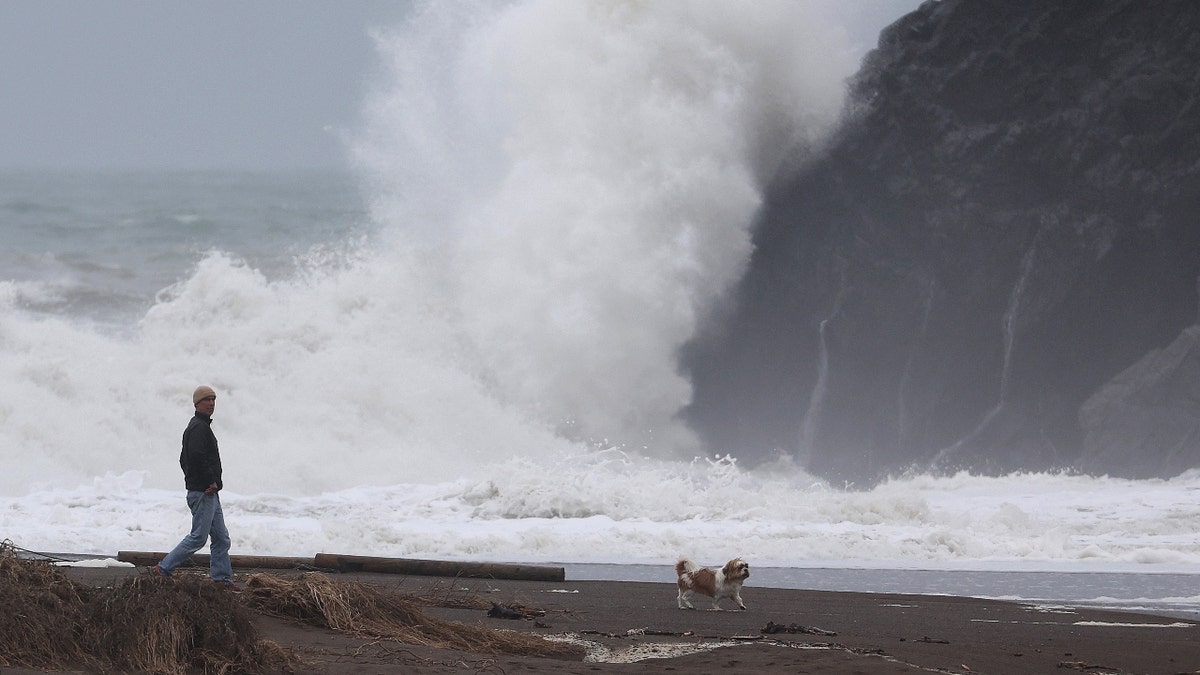Inside Hurricane Fiona: Saildrone video captures massive waves
Saildrone captured video from inside Category 4 Hurricane Fiona, with 50-foot waves and winds reaching 100 mph. (TMX)
California winter wave heights may be increasing under climate change, researchers say.
In a study published Tuesday in the Journal of Geophysical Research - Oceans, U.C. San Diego Scripps Institution of Oceanography's researcher emeritus Peter Bromirski used 90 years of seismic data to infer wave heights, revealing that the average heights of winter waves along the Golden State's coast has increased as the planet has warmed.
Bromirski used seismic records dating back to 1931 to infer wave height, filtering out the "noise" of actual earthquakes.
He explained in a release that when waves reach shallow coastal waters, some of their energy is reflected back out to sea, and when that energy collides with approaching waves, the collision creates a downward pressure signal that is converted in seismic energy at the seafloor. That seismic energy moves inland in the form of seismic waves that can be detected by seismographs. The strength of that seismic signal directly relates to wave height, allowing inference of one from the other.
WORLD'S HEAVIEST ANIMAL MAY BE ANCIENT WHALE FOUND IN THE PERUVIAN DESERT, SCIENTISTS SAY

Large waves crash into a seawall in Pacifica, California, on January 6, 2023. Giant waves, measuring as high as 13 feet, are becoming more common off California's Pacific coast as the planet warms, according to new research that used a unique approach to gather historical data over the past 90 years to track the increasing height of the surf. (AP Photo/Jeff Chiu, File)
Notably, buoys that directly measure wave heights along the California coast have only been collected since around 1980.
After a years-long process of digitizing analog seismic records held at U.C. Berkeley from 1931 to 1992, with the help of undergraduate students, the researcher was able to transform the data into wave heights.
His analysis found that post-1970 California's average winter wave height has increased by 13% in comparison with the same average between 1931 and 1969.
Between 1996 and 2016, there were about twice as many storm events that produced waves greater than 13 feet high along the California coast, compared with the years 1949 to 1969.
PRESIDENT BIDEN TO ADDRESS CLIMATE CHANGE EFFORTS AMID RECORD-HIGH TEMPERATURES IN THE WEST

Redondo Beach, CA - Trent Zimmerman, 15, bottom left of frame, looks up from playing in the low tide water inside the harbor, as giant wavers crash and spray over the breakwall of Redondo Beach, California, in the wake of a storm that cleared the south bay community of Los Angeles County, Thursday, Jan. 5, 2023. (Jay L. Clendenin / Los Angeles Times via Getty Images)
"After 1970, there is a consistently higher rate of large wave events," Bromirski said in a release. "It’s not uncommon to have a winter with high wave activity, but those winters occurred less frequently prior to 1970. Now, there are few winters with particularly low wave activity. And the fact that this change coincides with the acceleration of global warming near 1970 is consistent with increased storm activity over the North Pacific resulting from climate change."
Should winter waves off California continue to grow under climate change, he says it could amplify the effects of sea-level rise and have significant implications for coastal flooding and erosion.
"Waves ride on top of the sea level, which is rising due to climate change," the oceanographer said. "When sea levels are elevated even further during storms, more wave energy can potentially reach vulnerable sea cliffs, flood low-lying regions, or damage coastal infrastructure."

A man walks his dog on the beach as a large wave crashes into shore at Rodeo Beach on January 7, 2023, in Sausalito, California. (Justin Sullivan/Getty Images)
To understand how results compared with atmospheric patterns over the northern Pacific, Bromirski looked at the Aleutian Low, a semi-permanent wintertime low pressure system located near Alaska’s Aleutian Islands. The study said that the intensity of that low has generally increased since 1970. A more pronounced Aleutian Low typically corresponds to increased storm activity and intensity.
CLICK HERE TO GET THE FOX NEWS APP
"That intensification is a good confirmation that what we are seeing in the wave record derived from seismic data is consistent with increased storm activity," Bromirski added. "If Pacific storms and the waves they produce keep intensifying as climate change progresses and sea-level rises, it creates a new dimension that needs to be considered in terms of trying to anticipate coastal impacts in California."
The Associated Press contributed to this report.


